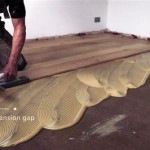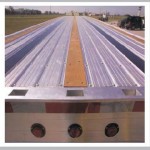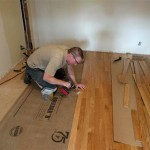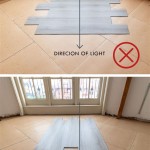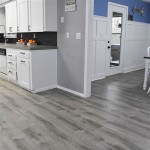```html
Outdoor Flooring Solutions at Homebase: A Comprehensive Guide
Outdoor flooring serves as a crucial element in transforming exterior spaces into functional and aesthetically pleasing areas. Homebase offers a diverse range of outdoor flooring options designed to suit various needs and preferences. These options include decking, paving, artificial grass, and composite materials, each possessing unique characteristics and benefits. Selecting the appropriate outdoor flooring requires careful consideration of factors like intended use, budget, maintenance requirements, and aesthetic goals. This article provides a comprehensive overview of the outdoor flooring solutions available at Homebase, guiding homeowners through the selection process and highlighting key considerations for a successful outdoor flooring project.
Understanding Different Types of Outdoor Flooring
Homebase provides a variety of outdoor flooring materials, each offering distinct advantages. A thorough understanding of these materials is essential for making an informed decision.
Decking: Traditional decking typically involves timber planks, offering a natural and warm aesthetic. Homebase stocks a range of softwood and hardwood decking options. Softwood decking, often pressure-treated for durability, is a cost-effective choice. Hardwood decking, such as ipe or teak, provides superior durability and resistance to weathering, but comes at a higher price point. The installation of decking involves constructing a subframe to support the planks, requiring some level of DIY skill or professional installation.
Paving: Paving stones offer a durable and versatile option for creating patios, walkways, and driveways. Homebase offers a wide selection of paving materials, including concrete slabs, natural stone (such as sandstone and limestone), and porcelain pavers. Concrete slabs are a budget-friendly choice, available in various sizes, colors, and textures. Natural stone provides a more premium look and feel, each piece exhibiting unique variations. Porcelain pavers are increasingly popular due to their resistance to staining, fading, and scratching, requiring minimal maintenance. Paving installation involves preparing a level base and laying the stones with appropriate spacing and jointing.
Artificial Grass: Artificial grass provides a low-maintenance alternative to natural lawns. Homebase offers various grades of artificial grass, differing in pile height, density, and realism. Higher-quality artificial grass mimics the appearance and feel of natural grass more closely. Installation involves preparing a level base, laying a weed membrane, and securing the artificial grass with adhesive or staples. Artificial grass is an ideal solution for areas where maintaining a natural lawn is challenging or impractical, such as shaded areas or areas with heavy foot traffic.
Composite Decking: Composite decking is manufactured from a blend of wood fibers and recycled plastics, offering a durable and low-maintenance alternative to traditional timber decking. Homebase stocks a variety of composite decking options, available in various colors and textures. Composite decking is resistant to rot, decay, and insect infestation, requiring minimal upkeep. Installation is similar to traditional decking, involving the construction of a subframe. While typically more expensive than softwood decking, composite decking offers a longer lifespan and reduced maintenance costs.
Factors to Consider When Choosing Outdoor Flooring
Selecting the right outdoor flooring involves considering several key factors to ensure it meets your specific needs and preferences.
Intended Use: The intended use of the outdoor space will significantly influence the choice of flooring. A high-traffic area, such as a patio used for frequent entertaining, will require a more durable and resilient flooring material than a low-traffic area, such as a decorative garden path. For areas intended for outdoor dining, consider materials that are easy to clean and resistant to staining. For areas where children will play, consider materials that are soft and slip-resistant.
Budget: The budget allocated for the outdoor flooring project is a crucial factor. Prices vary significantly between different types of flooring materials. Concrete slabs and softwood decking are generally the most budget-friendly options, while natural stone paving and hardwood decking are typically more expensive. Composite decking falls somewhere in between. It is important to factor in not only the cost of the materials but also the cost of installation, which can vary depending on the complexity of the project and whether professional installation is required.
Maintenance Requirements: The amount of maintenance required to keep the outdoor flooring looking its best is an important consideration. Some materials, such as natural stone and timber decking, require regular cleaning and sealing to prevent staining and weathering. Composite decking and artificial grass are generally low-maintenance options, requiring only occasional cleaning. Consider the time and effort you are willing to invest in maintaining the flooring when making your selection.
Aesthetic Considerations: The aesthetic appeal of the outdoor flooring is an important factor in creating a visually pleasing outdoor space. Consider the overall style of your home and garden when selecting flooring that complements the existing design. Different materials offer different aesthetic qualities. Timber decking provides a natural and warm aesthetic, while paving stones can create a more formal and sophisticated look. Artificial grass provides a lush green appearance, regardless of the weather conditions. Choose a material that aligns with your personal preferences and enhances the overall ambiance of your outdoor space.
Durability and Weather Resistance: Outdoor flooring is exposed to the elements, so durability and weather resistance are critical considerations. Choose materials that are resistant to fading, staining, cracking, and warping. In climates with frequent rainfall, consider materials that are slip-resistant when wet. Consider the potential for frost damage in areas with cold winters. Composite decking, porcelain pavers, and certain types of natural stone are known for their excellent durability and weather resistance.
Installation and Maintenance Tips for Outdoor Flooring
Proper installation and regular maintenance are essential for ensuring the longevity and appearance of outdoor flooring.
Decking Installation: Decking installation typically involves constructing a subframe to support the planks. Ensure the subframe is level and adequately spaced to provide proper support. Use pressure-treated lumber for the subframe to prevent rot and decay. When installing decking planks, leave small gaps between the planks to allow for expansion and contraction. Secure the planks to the subframe with screws or nails designed for outdoor use. Consider using hidden fasteners for a cleaner and more professional look. After installation, apply a sealant or stain to protect the timber from weathering.
Paving Installation: Paving installation requires careful preparation of the base. Excavate the area to the appropriate depth and compact the soil. Lay a sub-base of crushed stone to provide a stable foundation. Spread a layer of sharp sand over the sub-base and level it carefully. Lay the paving stones on the sand bed, ensuring they are level and evenly spaced. Fill the joints between the stones with jointing compound or mortar. Sweep away any excess material and compact the joints. Clean the paving stones with a pressure washer to remove any dirt or debris.
Artificial Grass Installation: Artificial grass installation requires a level and well-drained base. Remove any existing vegetation and compact the soil. Lay a weed membrane to prevent weed growth. Spread a layer of sharp sand over the weed membrane and level it carefully. Roll out the artificial grass and cut it to size. Secure the edges of the artificial grass with adhesive or staples. Brush the artificial grass to lift the fibers and create a natural look. Occasionally brush the artificial grass to remove any debris and maintain its appearance.
Composite Decking Installation: Composite decking installation is similar to traditional decking installation, but with some key differences. Composite decking typically requires less spacing between planks due to its lower expansion and contraction rate. Use fasteners specifically designed for composite decking to avoid damaging the material. When cutting composite decking, use a saw blade designed for plastics or composite materials. Avoid using excessive force when fastening the planks, as this can damage the material. Composite decking requires minimal maintenance, but occasional cleaning with soap and water will help to maintain its appearance.
General Maintenance: Regardless of the type of outdoor flooring you choose, regular cleaning is essential for maintaining its appearance. Sweep or vacuum the flooring regularly to remove dirt and debris. Clean spills immediately to prevent staining. Use a pressure washer to remove stubborn dirt or grime. Apply a sealant or stain to timber decking and natural stone paving every few years to protect it from weathering. Inspect the flooring regularly for any signs of damage and make repairs as needed.
By carefully considering these factors and following proper installation and maintenance guidelines, homeowners can select the ideal outdoor flooring solution from Homebase to create a functional, aesthetically pleasing, and long-lasting outdoor space.
```
Composite Decking Plastic Oak Ebony Homebase

House Beautiful Wall And Floor Tiles

Garden Outdoor Furniture Accessories Homebase

Laminate Vinyl Wood New Lower On Flooring Tiling Homebase

Decking Ideas Homebase

20 Off Selected Flooring Laminated To Vinyl Homebase

Garden Outdoor Furniture Accessories Homebase

20 Off Selected Flooring Laminated To Vinyl Homebase

How To Install Vinyl Floor Tiles Homebase

Simple Guide To Garden And Patio Flooring Decking Tiles Gravel
Related Posts

